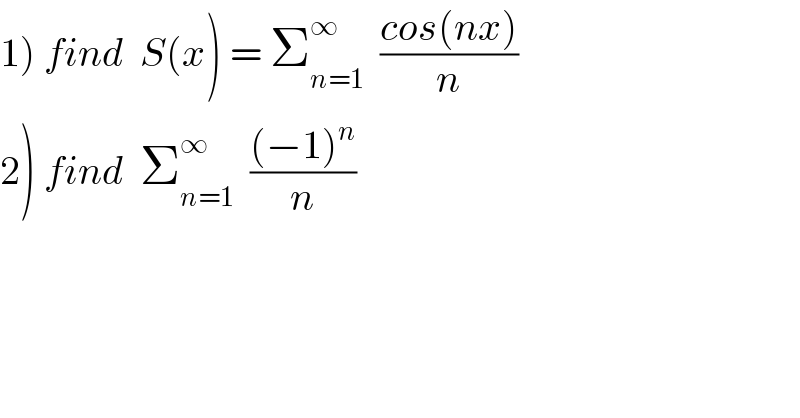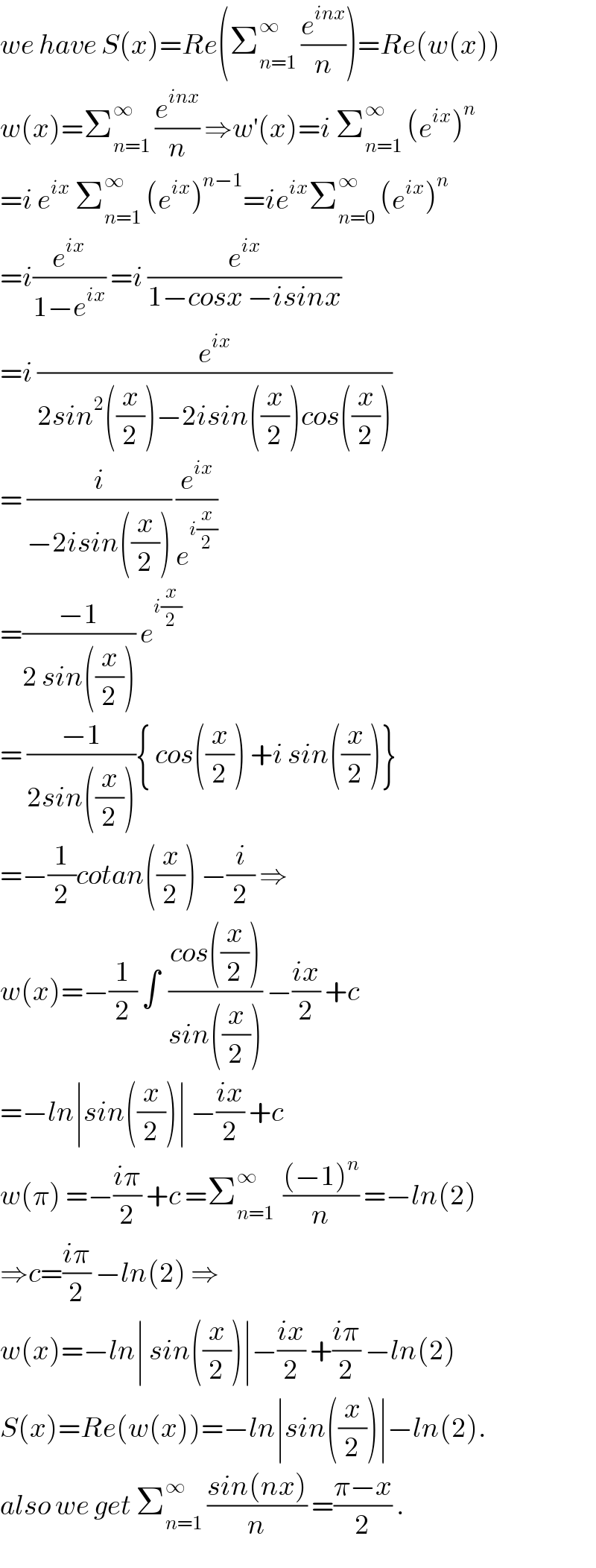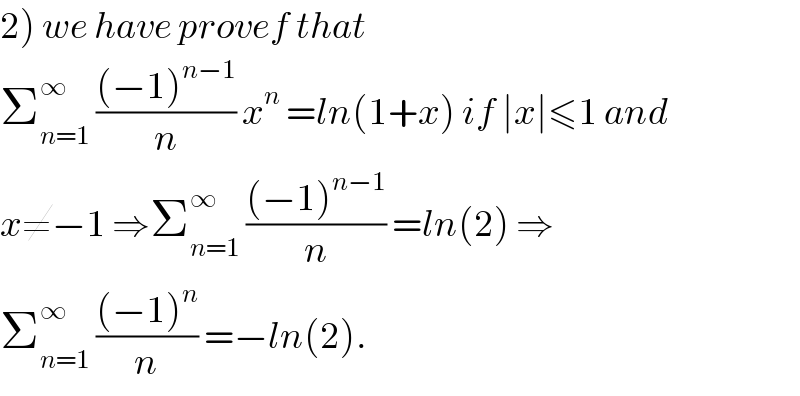
Question and Answers Forum
Previous in Relation and Functions Next in Relation and Functions
Question Number 38109 by maxmathsup by imad last updated on 21/Jun/18

Commented by abdo.msup.com last updated on 30/Jun/18

Commented by abdo.msup.com last updated on 30/Jun/18

